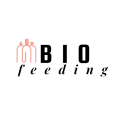Confident Feeding Tips: The Secret to Taking Control
You’ve heard the saying “mother knows best,” but as a new mom, you might sometimes feel that you’re fumbling in the dark. Don’t worry, every mother has been there. The key to gaining confidence in your mothering skills is to arm yourself with the right knowledge and tools. In this article, we direct the spotlight on one of the key tools in a mom’s arsenal – the baby bottle. Read on to discover some of the best admired mom bottles and pick up confident feeding tips along the way.
Miracle of Biomimetic Bottles: Natural and Nurturing
You’re aiming to give your baby the best start in life, right? Then you should consider biomimetic bottles, which aim to mimic the natural breastfeeding process as closely as possible. They are designed to let your little one control the flow of milk, stimulating their natural feeding behaviour. These best baby bottles help your baby build strong muscles in their mouth and support good dental health. More than that, they address a host of feeding issues like colic and gas which can be quite distressing for both you and your baby.
- Here is a comprehensive guide on the magic of biomimetic bottles.
- Dive deeper into the enchantment of biomimetic feeding with this insightful article.
- Understand why biomimetic bottles are essential for your baby’s well-being here.
Choosing Your Baby’s Bottle: Things to Consider
Deciding on your baby’s bottle isn’t just about choosing the cutest or the latest model on the market. Here are some key factors to keep in mind:
- Material. Baby bottles can be made from glass, plastic, or stainless steel. Each one has its pros and cons. For instance, glass bottles last longer and don’t contain harmful chemicals, but they are heavier and can break. Plastic bottles are light and unbreakable, but can scratch easily and need to be replaced often. Stainless steel bottles are long-lasting and eco-friendly, but they are expensive and not transparent, so you can’t see how much milk is left.
- Bottle’s Shape. Bottles come in standard, angled, or wide-neck designs. While standard bottles are easy to fill and clean, angled ones are designed to prevent air from mixing with milk, reducing gas and colic. Wide-neck bottles are suitable for thicker formulas and are easier to clean.
- Teat’s Shape and Flow Rate. Teats come in different shapes and flow rates, designed to suit babies at different ages
Admired Mom Bottles: Top Picks for the Informed Mom
When it comes to baby bottles, one size doesn’t fit all. It’s about finding the right fit for you and your baby. Check out these admired mom bottles that have won the hearts of moms worldwide:
- Munchkin Latch‘s innovative design mimics the breastfeeding experience, making the transition between breastfeeding and bottle-feeding smoother. It features an anti-colic valve that reduces gas and fussiness.
Be the Mom Everyone Looks Up To: Best Bottle Picks
Philips Avent Natural Bottle
Philips Avent Natural Bottle comes highly recommended as it has a wide, breast-shaped nipple, encouraging natural latch-on. Its petals inside the nipple increase softness and flexibility without nipple collapse, making it one of the best and simplest options, particularly for babies who switch between breast and bottle feeding.
Dr. Brown’s Natural Flow
Dr. Brown’s Natural Flow is a tried and tested favourite among mothers due to its patented internal vent system, minimizing air bubbles in the milk and helping to preserve nutrients such as vitamins C, A and E.
Feeding is a Journey, Not a Race
Remember that your baby’s feeding journey is unique and may involve a bit of trial and error. Don’t rush the process and take the time to work out what best suits both of you. If you’re struggling, do seek out support and advice. As the saying goes, it takes a village to raise a child, and there’s no shame in seeking help on your journey.
Baby Bottle Cleaning and Sterilization: Getting Serious
Cleaning and sterilization play a pivotal role in ensuring your baby’s bottles are safe to use. Inadequate cleaning can lead to the buildup of milk residue and bacteria, posing risks to your baby’s health.
- Cleaning. Right after feeding, rinse the bottle in cold water to remove milk residuals. Then, wash the bottle, nipple, cap, and ring in hot soapy water using a bottle brush, ensuring that you clean every nook and cranny. Rinse thoroughly afterward to eliminate any soap residues.
- Sterilizing. Sterilizing eliminates harmful bacteria that may have contaminated your baby’s feeding equipment during the washing process. This process is particularly critical for newborns under six months, premature babies, or those with weaker immune systems. Sterilization methods vary and include boiling, chemical sterilizers, electric steam sterilizers, or microwave steam sterilizers.
For a comprehensive guide on baby bottle cleaning, check out this informative blogpost.
A Final Word of Encouragement
Transitioning to bottle feeding can be daunting, but with patience, practicality, and a bit of insider knowledge, you’ll be well on your way to becoming an admired mom. You’ll soon find what works for you and your little one, turning meal times into a breeze.
“Motherhood is learning about strengths you didn’t know you had and dealing with fears you didn’t know existed.” – Linda Wooten
Never underestimate the power you hold as a mother. Your love, coupled with the right nurturing tools, is the ultimate support system for your baby.

